How long should food be kept in the refrigerator, and what is the best way to arrange it for maximum efficiency?

To maintain the freshness of food, proteins can typically be frozen for up to 6 months, while vegetables last for about a week. It’s also important to arrange items strategically between the freezer and the fridge for optimal results. For instance, you can take meat from the freezer and place it in the fridge the night before you plan to cook it. This not only saves preparation time but also maintains the meat’s freshness, as it doesn’t need to be defrosted in the microwave.
Effective food storage methods for various types of food
1. Bread Preservation
Using Paper Bags or Newspaper

Freshly baked bread will retain its crispness for about 8-9 hours. As soon as you get home, use paper bags or newspapers to wrap the bread and keep it in a cool, ventilated area. This method will preserve the bread’s crispness until the next day. Even a few days later, the bread will still be edible, although it may become slightly soft and stale.
Using Aluminum Foil or Ziplock Bags
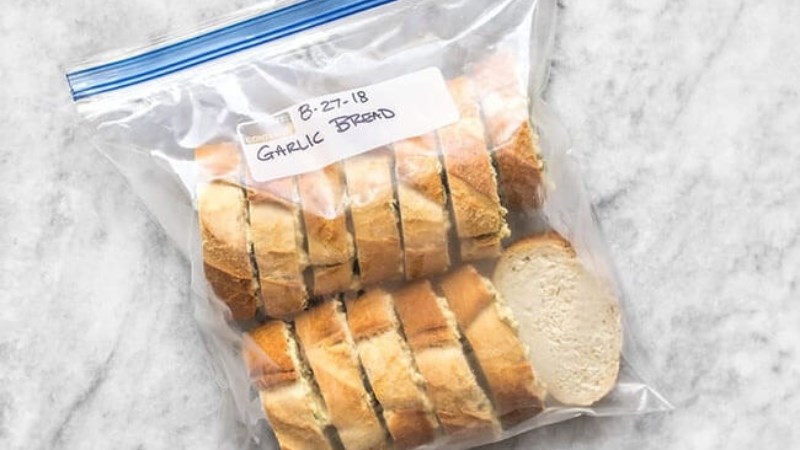
Aluminum foil and ziplock bags are a homemaker’s best friends, helping to maintain the crispness of bread without making it too dry while retaining a certain level of moisture, just like freshly bought bread. Additionally, if you wrap the bread in aluminum foil, reheating it is as simple as placing it in the oven or on the stove for 5-7 minutes to enjoy a freshly baked loaf. If using a ziplock bag, cut the bread into thin slices, store them at room temperature in a cool, ventilated area, and they’ll be ready to use the next day for your favorite recipes.
Wrap Tightly and Store in the Freezer
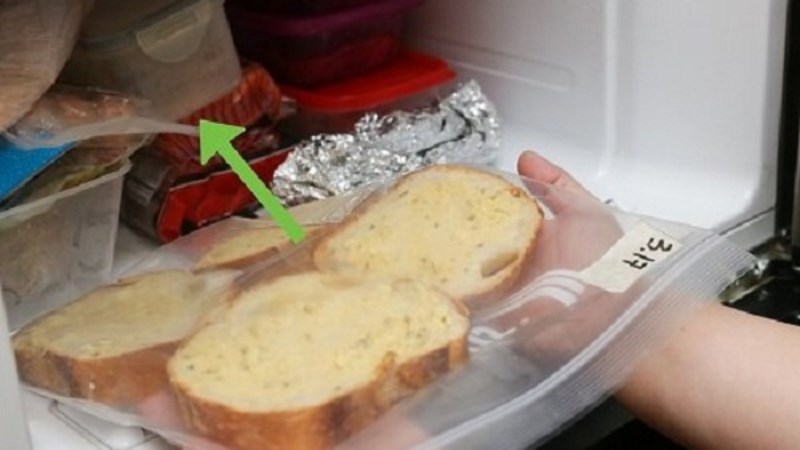
Place the bread in a ziplock bag, slowly press out the air, seal it tightly, and store it in the freezer. When you need to use it, simply thaw the desired amount. For the best results, it’s recommended to portion the bread into amounts that you and your family can consume in one sitting to avoid frequent thawing and refreezing, which can affect the bread’s taste and texture. If your loaf is too large for a single ziplock bag, consider cutting it into smaller portions for easier and more effective storage.
2. Vegetable Storage
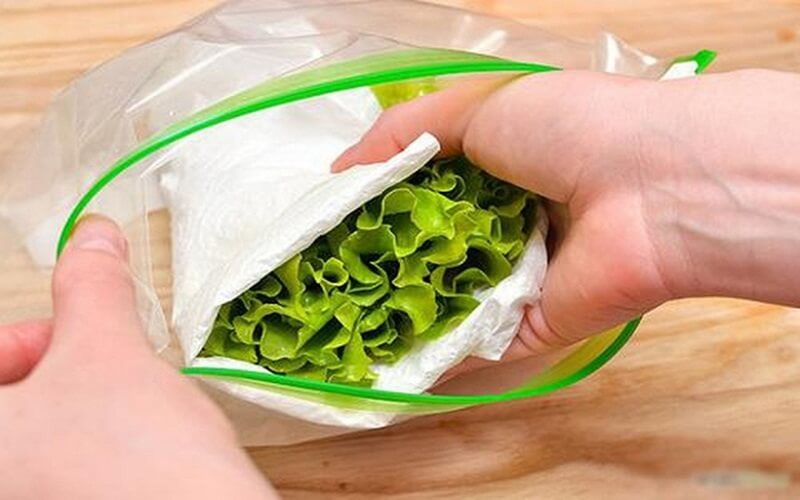
Use PP bags to wrap vegetables before placing them in the refrigerator. This will help reduce moisture loss. Alternatively, use a dry paper towel to wrap the vegetables, which will keep them fresh for at least a week, especially leafy greens.
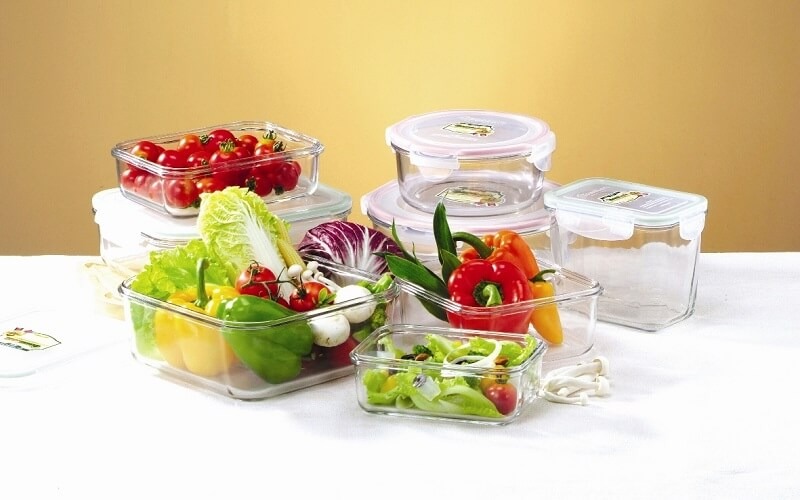
Storage boxes not only make food organization more aesthetically pleasing, but they also help retain the maximum amount of nutrients and freshness in vegetables. Additionally, these boxes are reusable, ensuring both hygiene and cost-effectiveness.
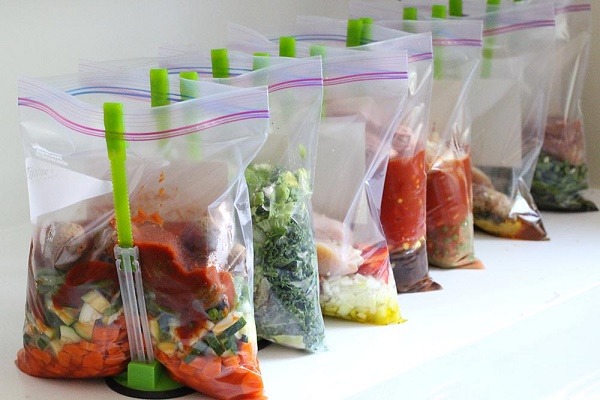
If you’re not planning to use the refrigerator, consider using airtight bags. Simply place the vegetables inside, fill the bag with air, and tightly seal it. This method is highly effective for vegetable storage.

For certain vegetables, using skewers can be beneficial. Insert three skewers deep into the vegetable’s stem, leaving only a small portion of the skewer exposed. This method helps retain moisture, keeping the vegetables fresh for a week without refrigeration. Note that this technique is suitable for vegetables with stems, such as lettuce, cabbage, and Chinese cabbage.

For vegetables like cauliflower, asparagus, herbs, and scallions, you can extend their freshness by storing them in water. Prepare a glass of water and arrange the vegetables like a bouquet to keep them fresh for 3-4 days. For cauliflower, use perforated plastic wrap to cover the florets, which will keep them crisp and fresh even at room temperature.
3. Sausage Preservation

The refrigerator is the best place to store sausages. However, in the absence of a refrigerator or in case of a power outage, you can quickly preserve them by mixing salt and sugar and coating the sausages with this mixture. While this method can extend the shelf life of sausages by absorbing moisture and inhibiting bacterial growth, it may also alter their flavor, so use it sparingly.
4. Canned Food Storage
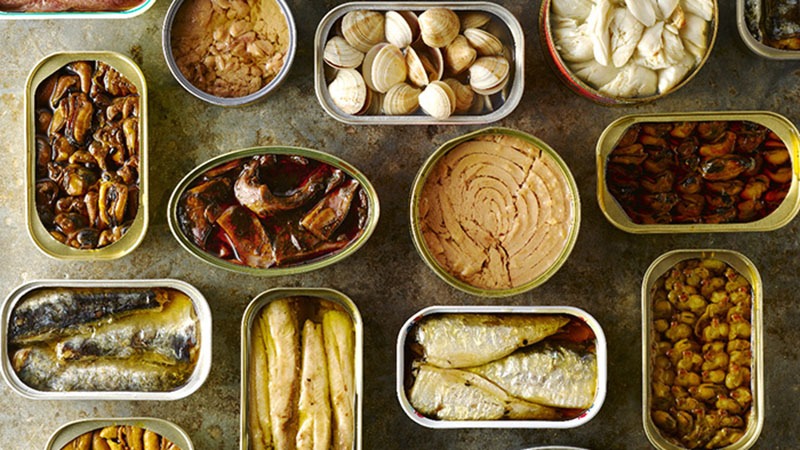
Canned foods should be stored safely at temperatures below 30°C, ideally between 10 and 21°C. There’s no need to freeze canned goods, as the freezer doesn’t provide the ideal temperature. Instead, store them in a cool, well-ventilated area, away from direct sunlight, and avoid places with high humidity, such as above the stove or under the sink.
Storing Cooked Food
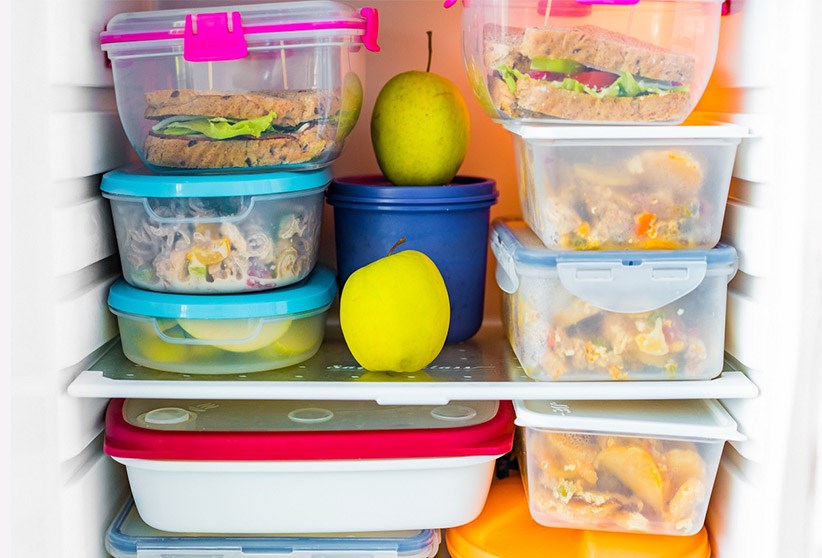
Allow cooked food to cool down (for about 2 hours) before transferring it to airtight containers and placing it in the fridge at a temperature between 2 and 4 degrees Celsius. Putting hot food directly into the fridge can increase the internal temperature, affecting other foods and causing the compressor to work harder, reducing the fridge’s lifespan. Consume cooked food within 3 days, and consider portioning it beforehand for added convenience.
Considerations for Food Preparation During Storms and Floods
During storms and floods, it’s common for households to stock up their refrigerators with food. Therefore, it’s crucial to adjust the temperature accordingly to ensure proper food preservation and prevent the creation of an environment conducive to bacterial growth and spread.
Avoid overstocking your refrigerator with food, as the inability to buy fresh produce usually doesn’t last long, and food stored for extended periods will lose its taste and nutritional value. Moreover, in the event of a prolonged power outage, food stored in the fridge is likely to spoil. Typically, most families already have a week’s worth of food in their freezers, so when preparing for floods, you may only need to purchase a small amount of additional food, or even just some extra vegetables.
In the event of a power outage, keep the refrigerator and freezer doors closed to maintain the internal temperature. A fully stocked freezer can retain its cold temperature for about 48 hours, while a half-full freezer will stay cold for approximately 24 hours.
Place a Bowl of Water in the Freezer Overnight
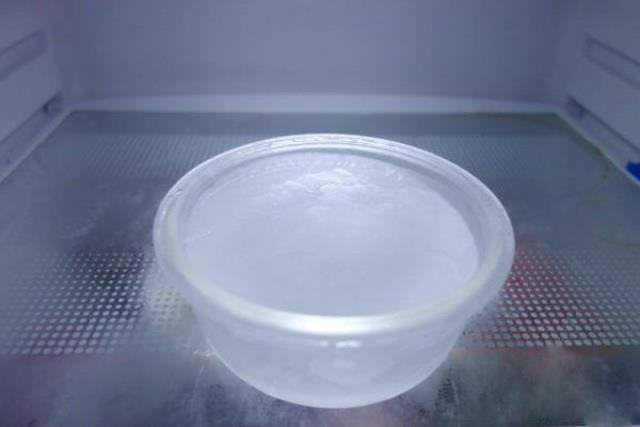
You can save energy by placing a bowl of water in the freezer overnight and then moving it to the fridge compartment in the morning. Since the refrigerator door is rarely opened during the night, the water will freeze without consuming much energy. As the ice melts in the fridge, it will release cold air, reducing the need for high-energy cooling. Repeating this process daily will help minimize the refrigerator’s energy consumption. Additionally, as the ice melts, it provides “fresh” water to the produce, preventing wilting, maintaining moisture, and prolonging the freshness and shelf life of your food.
According to GĐXH
The Power Hungry Six: Uncovering the Hidden Energy Drains in Your Home
It’s easy to assume that air conditioners are the biggest energy guzzlers in our homes, but there are other sneaky appliances that can drive up your electricity bills if you’re not careful. From the moment you wake up to the second you fall asleep, various electrical devices are quietly running up your expenses.







































